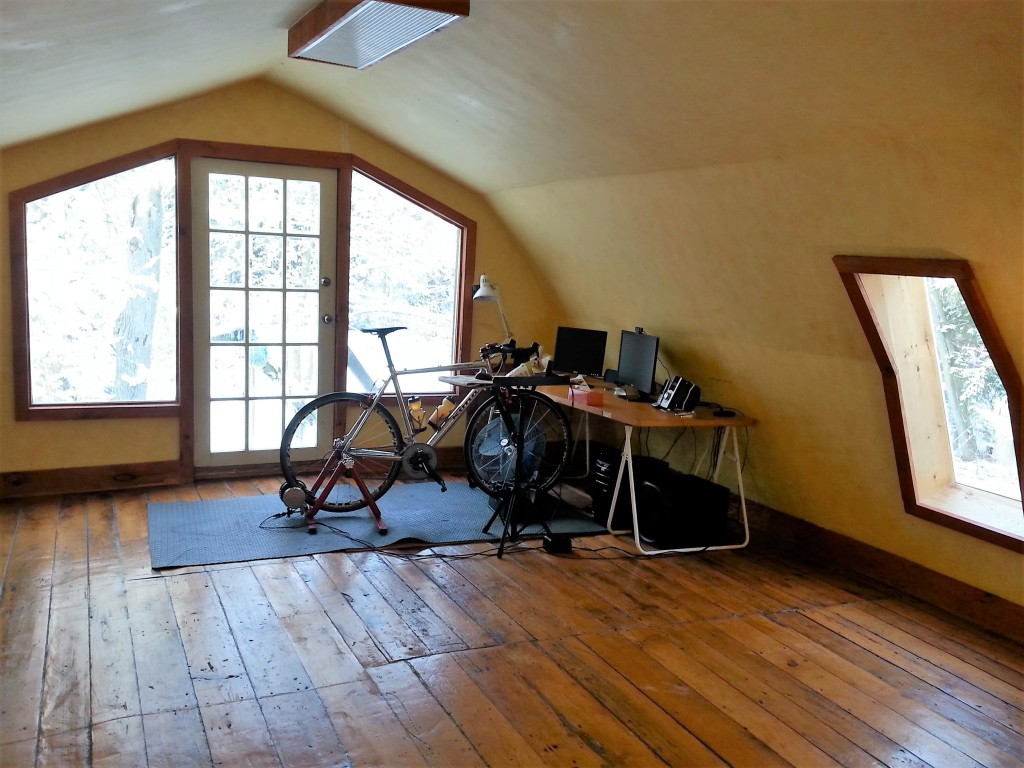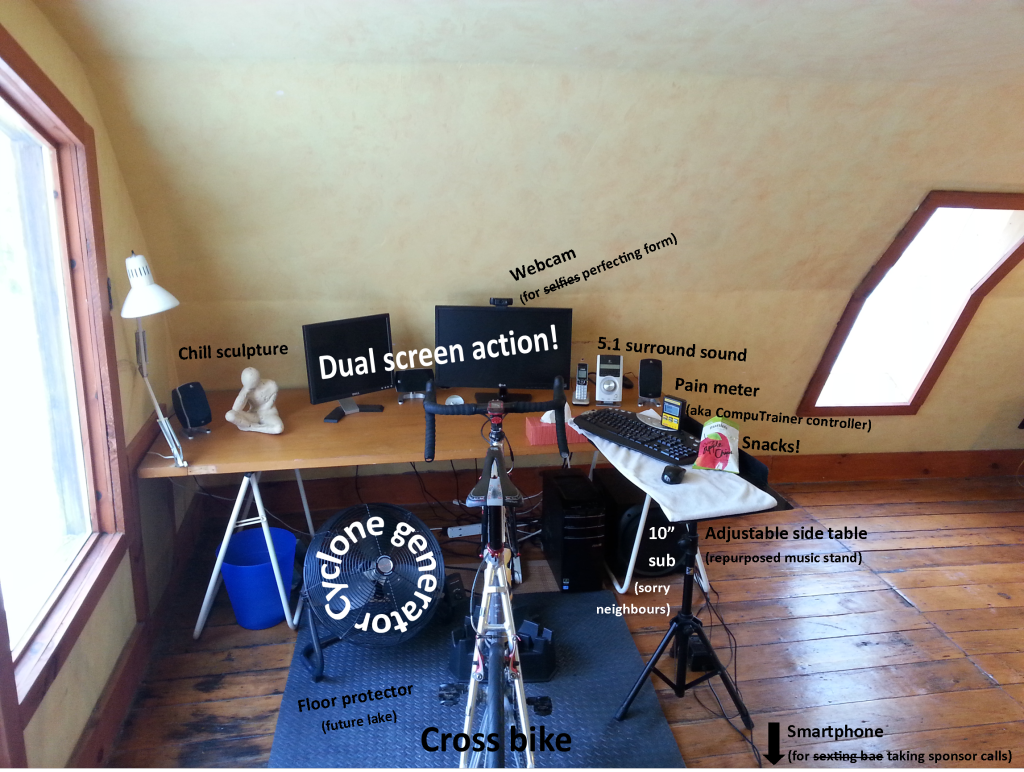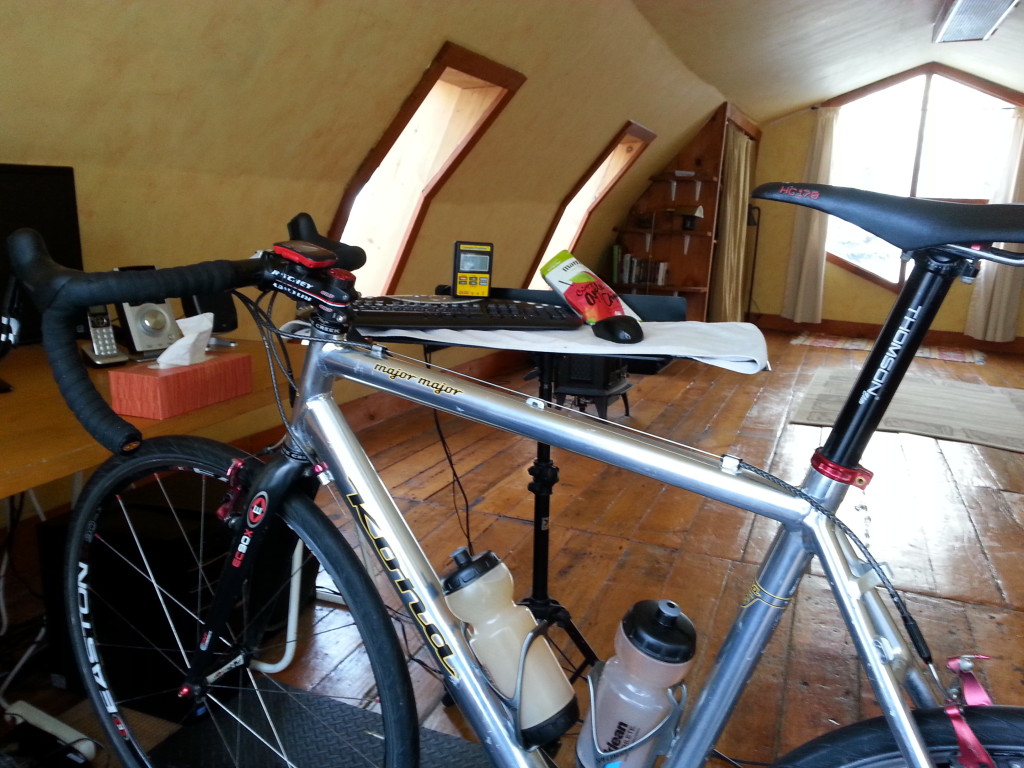Confession: I’ll take the trainer over the road almost any day. *Gasp*
Triathletes and cyclists are divided into three camps: those who detest indoor training and avoid it at all costs, those who dislike it but grudgingly recognize its value, and a questionably sane minority including me who actually prefer it to outdoor training. In this post, I’ll describe how I’ve not only made indoor training tolerable, but preferable and extremely effective.
Why the trainer?
Just a few years ago, cycling was my weakest triathlon discipline. I bled minutes on the bike at local short course triathlons and dreaded that leg of the race. But by 2015, armed with substantially more power, a mastermind coach and an unusually slippery position, I was posting top bike splits including bike course records at Ironman 70.3 Eagleman and Silverman. I was finally in my element on the bike.
Remarkably, I’ve averaged just 6 to 7 hours per week of cycling over the past couple years, nearly half the volume of some of my pro triathlete peers. What gives me such bang for my biking buck? Besides my coach, if I have one secret, it’s that year-round work on the trainer has become my bread and butter.
There are no real shortcuts in endurance training and indoor cycling certainly isn’t a means to shirk the necessary hard work. That said, I find that the trainer facilitates higher quality, more efficient training than is generally possible outdoors. The trainer allows me to precisely execute my workouts without traffic, stops, flats, hills or wind to get in the way. I’m in complete control of my environment and level of suffering.
Safety is also a major plus to indoor training. This is particularly true for my toughest workouts which end in failure, when I can’t spare an iota of attention to monitor traffic or avoid drunkenly swerving all over the road. On my triathlon bike, a low position and high speed also make me less conspicuous to drivers and limit my own visibility.
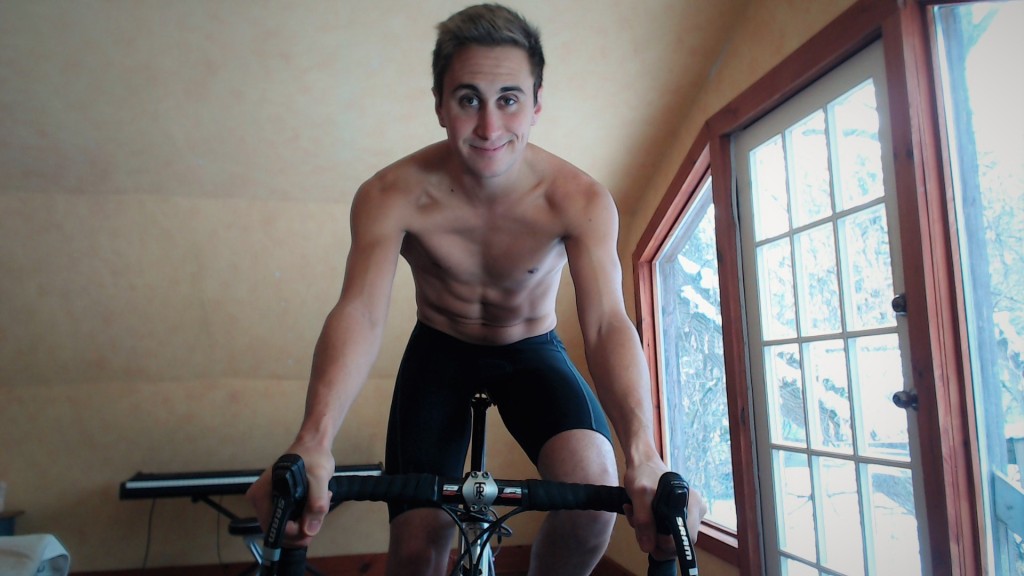
The setup
A comfortable, convenient and inspiring indoor training space is key. I spent my university years cranking away in a grisly and cramped basement pain cave, wedged between moldy stone walls and cobwebbed pipes with only an iPod to pass the time. While a setup like that may fuel Rocky-esque fantasies, it fell short on comfort and inspiration and my training suffered as a result.
My current setup in my loft apartment couldn’t be more different. It’s light and airy, comfortable and ergonomic. Everything I could possibly need is within arms reach.
The first thing triathletes will notice is that I’m not using my tri bike on the trainer. In fact, it’s a cross bike. “But what about specificity!?”, the triathletes wail. Meh. I’ve found that fitness built on my cross bike on the trainer readily translates to my tri bike outdoors after a couple weeks of acclimation. Like many, I find it highly uncomfortable to ride in my aero bars on the trainer for any length of time, though the same position feels perfectly dialed in outside. For this reason, I’ve been spending most of my indoor hours on my cross bike. Currently, months away from races, only my cross bike is getting attention.
Cooling can be a major limiter on the trainer, so a powerful fan is essential. I picked up a commercial grade fan from the classifieds, which is easily the best $30 I’ve ever spent.
I also consider a smart trainer to be indispensable for serious indoor cycling for a few reasons. More on that another time.
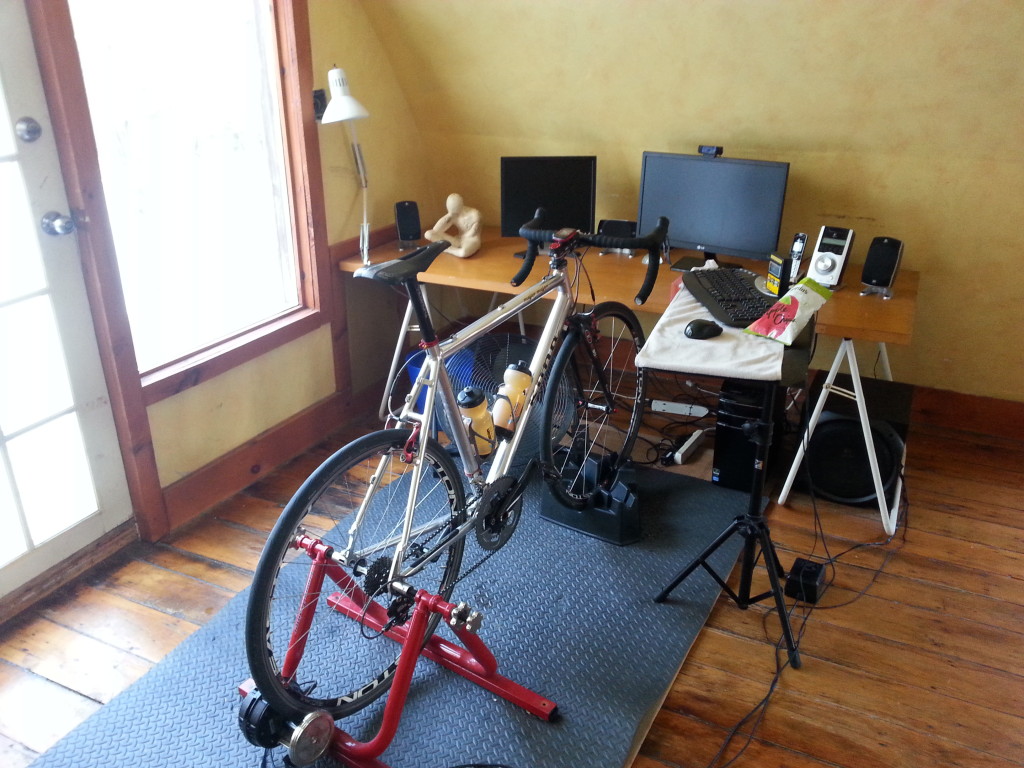
Trainertainment
The greatest objection most people have to indoor training is that it’s deathly boring, but this need not be the case. I rely on a variety of entertainment options to make my trainer time not only tolerable, but even fun and productive.
Music is my go-to diversion on the trainer, but I also occasionally listen to podcasts and audiobooks, watch YouTube and Netflix and text on my phone. Recently, I’ve even resorted to Snapchat. The rosy glow you get from exercise will up your selfie game… if your phone survives all the sweat. During steady rides, I’ve done online shopping, read journal articles, written blog posts (including this one) and once attempted to pay bills (not recommended—I botched that).
There may even be performance benefits to performing cognitively demanding tasks while you train. Recent research suggests that this technique can increase your tolerance for effort when that mental stress is eliminated, say, on race day. (I wonder if Snapchat qualifies?)
Of course, hard workouts demand complete focus and a bass thumping soundtrack. I’ve been known to play a single song on repeat for hours, putting myself into a trance-like state (more zombie then zen). My personal record was looping one song 36 times during a killer session. A word of warning: this song was echoing in my head for days after and I still experience something like PTSD whenever I hear it. This technique has produced some personal best workouts, and probably also convinced my coach, family and neighbours that I’m unhinged.
Another piece of advice is to avoid watching the clock, at least during steady rides. Time passes more quickly when my eyes aren’t glued to the clock. But as soon as I peek at the time, it’s as if a spell is broken and time slows to a crawl. I set up a screen on my Garmin that doesn’t show time and I’ll sometimes set an alarm or a timer for my ride or intervals.
Visualization
I also try to devote at least a little time every workout to visualizing race scenarios or general goals. I’ll often picture myself making a devastating pass, dropping a certain competitor, attacking a key segment of a course or breaking the tape. Again, I embrace repetition, visualizing the same moment again and again and again. On race day, it’s a uniquely awe-inspiring and surreal feeling to play out a scenario you’ve mentally rehearsed countless times in training.
Fuel
Nothing gives me a lift during a long trainer ride like some tasty snacks. I rarely resort to sports nutrition products since real food is convenient on the trainer. And so soon after race season, I don’t want to see any carbohydrate sludge for a while! Staples include pitas, pancakes, french toast, muffins and other baked goods, PB&J, bananas, dried fruit, lemonade, iced tea, and my current obsession, apple chips and cider from local producer Martin’s Family Fruit Farm.
My training
This post wouldn’t be complete without a brief word on my training. It should go without saying that averaging just 6-7 hours per week of cycling (ranging from ~2 to 12 hours) as a long course pro demands highly structured and relatively high intensity training. I almost never do recovery rides and nearly all my rides average at least 250 watts (mid-upper Zone 2). I also do some pretty devastating interval workouts… Let’s just say that Lionel Sanders isn’t the only one to curse and sob on the trainer. This is evident in the intensity distribution of my 2015 bike training, shown below. I’d love to share all the gory details, but I fear that my coach’s team of intellectual property lawyers would bust down my door!
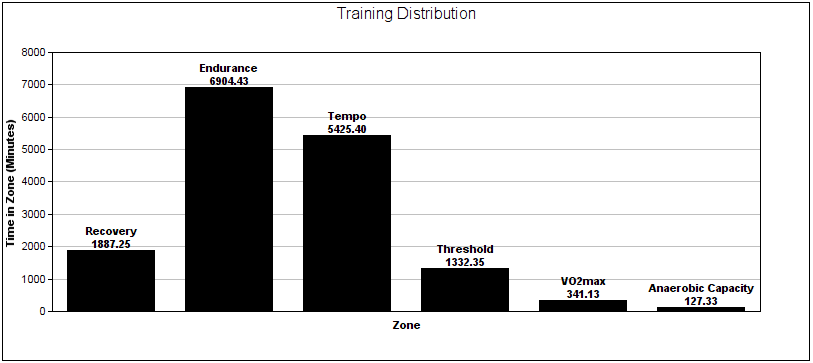
A trainer-centric approach isn’t for everyone. In fact, more than a few other pro triathletes have informed me that I’m doing it wrong, I’m going to burn out, I’m crazy (I take that as high praise). So far, I can’t argue with the progress I’ve made with this approach.
Please join the conversation about this post on Facebook, Twitter or in the comments below.

